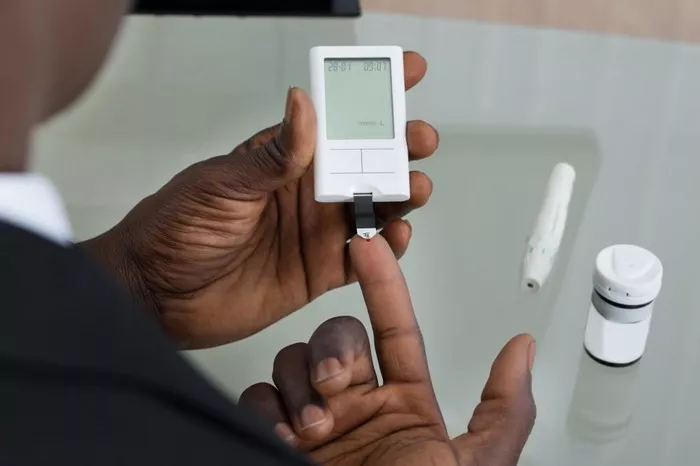Insulin resistance is a metabolic condition characterized by the body’s reduced ability to respond to the hormone insulin, which plays a critical role in regulating blood glucose levels. This condition is often a precursor to type 2 diabetes and is associated with other metabolic disorders, including obesity, hypertension, and dyslipidemia. Managing insulin resistance is crucial to prevent the progression to more severe metabolic conditions and to maintain overall health. This article explores the mechanisms of insulin resistance, its risk factors, symptoms, and comprehensive strategies for effective management.
Mechanisms of Insulin Resistance
Insulin is a hormone produced by the pancreas that facilitates the uptake of glucose from the bloodstream into cells, where it is used for energy. In insulin resistance, cells in muscles, fat, and the liver do not respond properly to insulin and cannot easily take up glucose from the blood. This leads to an increase in blood glucose levels, prompting the pancreas to produce more insulin. Over time, this can exhaust the pancreatic beta cells, potentially leading to type 2 diabetes.
Several mechanisms contribute to insulin resistance, including:
- Genetic Factors: Certain genetic mutations can affect insulin signaling pathways, making individuals more susceptible to insulin resistance.
- Obesity: Excess fat, particularly visceral fat, releases inflammatory cytokines and free fatty acids that interfere with insulin signaling.
- Physical Inactivity: Lack of physical activity reduces muscle glucose uptake and contributes to obesity, exacerbating insulin resistance.
- Hormonal Imbalances: Conditions such as polycystic ovary syndrome (PCOS) and Cushing’s syndrome can affect hormone levels and contribute to insulin resistance.
- Diet: Diets high in refined carbohydrates, sugars, and unhealthy fats can lead to weight gain and metabolic disturbances that promote insulin resistance.
Risk Factors for Insulin Resistance
Several factors increase the risk of developing insulin resistance:
- Obesity and Overweight: Excess body weight, especially around the abdomen, is a significant risk factor.
- Sedentary Lifestyle: Physical inactivity reduces insulin sensitivity.
- Unhealthy Diet: Diets high in processed foods, sugars, and unhealthy fats contribute to insulin resistance.
- Age: The risk of insulin resistance increases with age.
- Family History: A family history of type 2 diabetes or insulin resistance can increase risk.
- Ethnicity: Certain ethnic groups, including African Americans, Hispanics, Native Americans, and Asians, have a higher risk of insulin resistance.
Symptoms of Insulin Resistance
Insulin resistance itself often does not present obvious symptoms until it progresses to prediabetes or type 2 diabetes. However, some signs and symptoms may indicate its presence, including:
- Acanthosis Nigricans: Dark, velvety patches of skin, usually on the neck, armpits, or groin.
- Skin Tags: Small, benign skin growths.
- Abdominal Obesity: Excess fat around the stomach area.
- Fatigue: Persistent tiredness and lack of energy.
- Frequent Urination and Thirst: Indicative of high blood sugar levels.
Diagnostic Measures
Insulin resistance is typically diagnosed through a combination of medical history, physical examination, and laboratory tests. Key diagnostic measures include:
- Fasting BlHomeostasis Model Assessment of Insulin Resistance): Calculated using fasting glucose and insulin levels to estimate insulin resistance.
Management Strategies for Insulin Resistance
Managing insulin resistance involves lifestyle modifications, medical interventions, and sometimes medications. The goal is to improve insulin sensitivity, reduce blood glucose levels, and prevent or delay the onset of type 2 diabetes. Key strategies include:
1. Lifestyle Modifications
Dietary Changes:
A balanced diet is crucial in managing insulin resistance. Key dietary recommendations include:
- Low Glycemic Index Foods: Choose foods with a low glycemic index, such as whole grains, legumes, vegetables, and fruits, which have a slower impact on blood sugar levels.
- Healthy Fats: Incorporate sources of healthy fats, such as avocados, nuts, seeds, and olive oil, while reducing intake of saturated and trans fats.
- Fiber-Rich Foods: Increase intake of dietary fiber from whole grains, vegetables, fruits, and legumes to improve blood sugar control.
- Protein: Include lean protein sources, such as poultry, fish, beans, and tofu, to help stabilize blood sugar levels.
- Portion Control: Practice portion control to manage calorie intake and avoid overeating.
Physical Activity:
Regular physical activity is essential for improving insulin sensitivity and overall metabolic health. Recommendations include:
- Aerobic Exercise: Engage in at least 150 minutes of moderate-intensity aerobic exercise per week, such as brisk walking, cycling, or swimming.
- Strength Training: Include resistance exercises at least two days a week to build muscle mass and improve glucose uptake.
- Active Lifestyle: Incorporate more physical activity into daily routines, such as taking the stairs, walking instead of driving short distances, and engaging in recreational activities.
Weight Management:
Achieving and maintaining a healthy weight is critical in managing insulin resistance. Strategies include:
- Gradual Weight Loss: Aim for a gradual weight loss of 5-10% of body weight to improve insulin sensitivity.
- Behavioral Changes: Adopt healthy eating habits, regular physical activity, and behavioral strategies to support long-term weight management.
Stress Management:
Chronic stress can contribute to insulin resistance. Effective stress management techniques include:
- Mindfulness and Meditation: Practice mindfulness, meditation, or deep-breathing exercises to reduce stress.
- Regular Sleep: Ensure adequate and quality sleep to support overall health and metabolic function.
- Healthy Coping Mechanisms: Engage in hobbies, social activities, and other enjoyable activities to manage stress.
2. Medical Interventions
In some cases, lifestyle modifications may not be sufficient, and medical interventions may be necessary. These include:
Medications:
Several medications can help manage insulin resistance, including:
- Metformin: Often prescribed for prediabetes and type 2 diabetes, metformin improves insulin sensitivity and reduces glucose production in the liver.
- Thiazolidinediones: Medications like pioglitazone and rosiglitazone improve insulin sensitivity in fat and muscle cells.
- GLP-1 Receptor Agonists: Medications such as liraglutide and exenatide can improve insulin secretion and reduce appetite.
- SGLT2 Inhibitors: These medications help lower blood sugar by promoting the excretion of glucose in the urine.
Bariatric Surgery:
For individuals with severe obesity and insulin resistance, bariatric surgery may be an option. Surgical procedures such as gastric bypass and sleeve gastrectomy can lead to significant weight loss and improvements in insulin sensitivity.
3. Monitoring and Follow-Up
Regular monitoring and follow-up are crucial in managing insulin resistance. This includes:
- Blood Glucose Monitoring: Regularly check blood glucose levels to assess control and adjust management strategies as needed.
- Medical Check-Ups: Schedule regular appointments with healthcare providers to monitor health status, adjust medications, and receive guidance.
- Lifestyle Adjustments: Continuously assess and adjust lifestyle habits to ensure they align with health goals.
See also: What’s the relationship of Insulin Resistance and Heart Disease
Conclusion
Insulin resistance is a significant metabolic disorder that requires comprehensive management to prevent progression to type 2 diabetes and other related conditions. Through a combination of lifestyle modifications, medical interventions, and regular monitoring, individuals can improve insulin sensitivity and maintain overall health. Early detection and proactive management are key to mitigating the impact of insulin resistance and achieving long-term well-being.
Related topics:
How to Manage Insulin Resistance



























